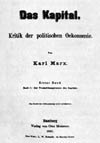

Wind was too inconstant and uncontrollable, and besides, in England, the birthplace of Modern Industry, the use of water-power preponderated even during the manufacturing period. In the 17th century attempts had already been made to turn two pairs of millstones with a single water-wheel. But the increased size of the gearing was too much for the water-power, which had now become insufficient, and this was one of the circumstances that led to a more accurate investigation of the laws of friction. In the same way the irregularity caused by the motive power in mills that were put in motion by pushing and pulling a lever, led to the theory, and the application, of the fly-wheel, which afterwards plays so important a part in Modern Industry. In this way, during the manufacturing period, were developed the first scientific and technical elements of Modern Mechanical Industry. Arkwright’s throstle-spinning mill was from the very first turned by water. But for all that, the use of water, as the predominant motive power, was beset with difficulties. It could not be increased at will, it failed at certain seasons of the year, and, above all, it was essentially local. Not till the invention of Watt’s second and so-called double-acting steam-engine, was a prime mover found, that begot its own force by the consumption of coal and water, whose power was entirely under man’s control, that was mobile and a means of locomotion, that was urban and not, like the waterwheel, rural, that permitted production to be concentrated in towns instead of, like the water-wheels, being scattered up and down the country, that was of universal technical application, and, relatively speaking, little affected in its choice of residence by local circumstances. The greatness of Watt’s genius showed itself in the specification of the patent that he took out in April, 1784. In that specification his steam-engine is described, not as an invention for a specific purpose, but as an agent universally applicable in Mechanical Industry. In it he points out applications, many of which, as for instance, the steam-hammer, were not introduced till half a century later. Nevertheless he doubted the use of steam-engines in navigation. His successors, Boulton and Watt, sent to the exhibition of 1851 steam-engines of colossal size for ocean steamers.
As soon as tools had been converted from being manual implements of man into implements of a mechanical apparatus, of a machine, the motive mechanism also acquired an independent form, entirely emancipated from the restraints of human strength. Thereupon the individual machine, that we have hitherto been considering, sinks into a mere factor in production by machinery. One motive mechanism was now able to drive many machines at once. The motive mechanism grows with the number of the machines that are turned simultaneously, and the transmitting mechanism becomes a wide-spreading apparatus.
We now proceed to distinguish the co-operation of a number of machines of one kind from a complex system of machinery.
In the one case, the product is entirely made by a single machine, which performs all the various operations previously done by one handicraftsman with his tool; as, for instance, by a weaver with his loom; or by several handicraftsman successively, either separately or as members of a system of Manufacture. For example, in the manufacture of envelopes, one man folded the paper with the folder, another laid on the gum, a third turned the flap over, on which the device is impressed, a fourth embossed the device, and so on; and for each of these operations the envelope had to change hands. One single envelope machine now performs all these operations at once, and makes more than 3,000 envelopes in an hour. In the London exhibition of 1862, there was an American machine for making paper cornets. It cut the paper, pasted, folded, and finished 300 in a minute. Here, the whole process, which, when carried on as Manufacture, was split up into, and carried out by, a series of operations, is completed by a single machine, working a combination of various tools. Now, whether such a machine be merely a reproduction of a complicated manual implement, or a combination of various simple implements specialised by Manufacture, in either case, in the factory, i.e., in the workshop in which machinery alone is used, we meet again with simple co-operation; and, leaving the workman out of consideration for the moment, this co-operation presents itself to us, in the first instance, as the conglomeration in one place of similar and simultaneously acting machines. Thus, a weaving factory is constituted of a number of power-looms, working side by side, and a sewing factory of a number of sewing-machines all in the same building. But there is here a technical oneness in the whole system, owing to all the machines receiving their impulse simultaneously, and in an equal degree, from the pulsations of the common prime mover, by the intermediary of the transmitting mechanism; and this mechanism, to a certain extent, is also common to them all, since only particular ramifications of it branch off to each machine. Just as a number of tools, then, form the organs of a machine, so a number of machines of one kind constitute the organs of the motive mechanism.